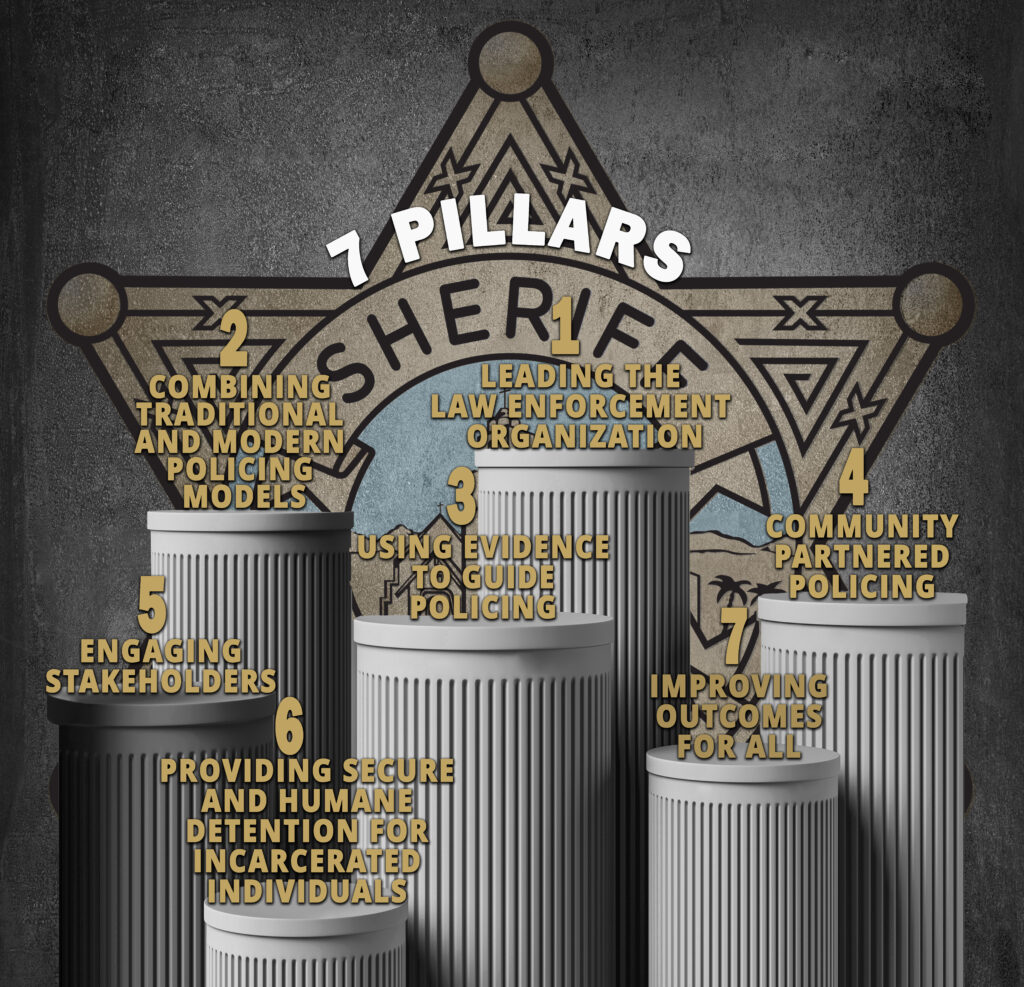
Law enforcement, in general, is facing the most significant challenge in 30 years. Nationally, there is a greater sense of distrust in law enforcement and an increase in the questioning of officers’ practices and tactics. These challenges need to be met with strong leadership, by informed and dedicated leaders, who champion both community connections and the importance of fundamental and adaptive police work. Trust is at the core of the collective success at making and keeping safe communities. If law enforcement does not meet and partner with community members to create an understanding of the issues law enforcement officers face and the tough choices officers must make, we will never have the trust we need to do our job. Conversely, if we do not listen to our community, we will never understand their fears, concerns, or desires.
We will build upon the collective success of our past and reintroduce programs meant to protect our communities to further insulate them from crime and disorder. We will add to previous work on programs geared towards school safety, active shooter threats, reducing gang membership, and creating law enforcement partnered programs in our schools. Happy, healthy, and safe young minds of today, will make for productive, well-balanced adults in the future.
Locally, we enjoy by an overwhelming margin, the support of the communities we serve. We must be ever vigilant, aware, and appreciative of the awesome responsibilities we have as public servants. The Ventura County Sheriff’s Office will consistently engage, listen, and heed the advice of the members of our community. Conversations need to take place inside the organization as well as with the community, but, more importantly, between the agency and the community. If conversations occur within a vacuum, or in an echo chamber, there will be a disconnect that is detrimental to ensuring safer communities. Bottom line, our agency will communicate and support internal and external engagement that leads to ever increasing safety for the public we serve.

Enforcing the law and keeping the peace is the core of what we do. Reactive, proactive, and preventive policing make up the three sides of the law enforcement triangle. When we engage all three sides of the triangle, and we use evidence to guide our decision making, we are at our most effective.
Reactive policing is what individuals typically think about when they envision the job of an officer. For instance: a crime occurs, law enforcement receives a call, detectives may be consulted, a suspect might be arrested, if so, a case is filed with a prosecutor’s office, and the suspect has his day in court. Although this is the bulk of what makes up the day of an officer, it takes a lot of time, costs money, and utilizes many resources. This is an area where we leave the biggest impression on our community. Most people go their whole lives without needing law enforcement services directly. When they do, we will provide excellent service, taking the time to make them feel important, letting them know their reason for calling mattered, and if they are a victim, having empathy and doing all we can to document the crime and track down the offender.
Proactive policing includes rooting out criminal activity through making contacts with individuals during pedestrian or traffic stops, conducting probation and parole searches, acting on human intelligence, and using analytics to focus efforts in certain areas of the community. Although this is an effective method for keeping communities safe, aggressive and proactive police work can alienate relationships with community members if not done so in the spirit of fairness, transparency, impartiality, and partnership.
For too long, arrest and citation statistics have been the metric used to determine an officer’s worth in many police organizations. Although important, we are falling short in not measuring other equally important metrics. We will now be particularly interested in answering and addressing the following questions: How safe do our communities feel? Do they see officers patrolling their area? Do residents, business owners, and visitors to our communities feel they can walk up and talk to our officers? Are our officers available to the community and do our officers feel connected to the community they are serving? Do they know the residents, business owners, and community leaders? Do they have the time to develop those relationships to be more effective? Again, we need to know the officers in the field are staying busy and protecting the community from those who intend to do harm, but if all we measure is negative contacts with the community, how are we ever going to have a positive relationship with them?
Crime prevention strategies include: 1) Target hardening through efforts such as CPTED (Crime Prevention Through Environmental Design); 2) collaborating with businesses and residents in a manner that inspires them to be a force multiplier of safety by empowering them as the eyes and ears of our communities; and 3) conducting outreach and communicating trends through the use of traditional media and social media. We will be present and available to the communities we serve. Additionally, all members of the Sheriff’s Office will be required to focus more efforts on crime prevention, and a more well-defined emphasis on such will be established department wide.
In all three facets of policing, we must respond to public concerns in a manner that builds confidence in our agency and strengthens relationships with our community. VCSO will focus more efforts on proactive and preventive policing. By doing so, less time will be spent responding to crime and more time can be spent partnering with the communities we serve for the betterment of all.